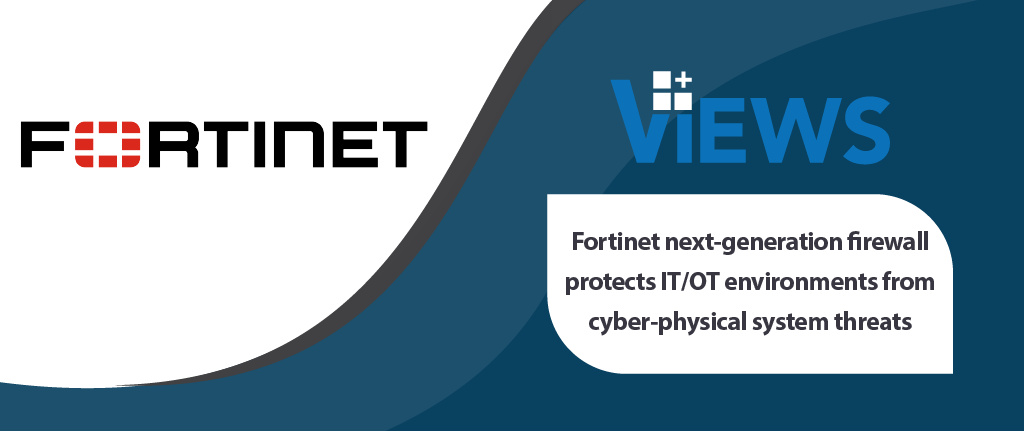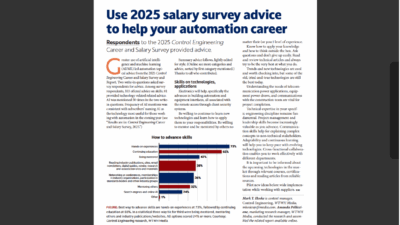
This article is sponsored by Fortinet. In this VIEWS article, Control Engineering spoke with Richard Springer, Senior Product Marketing Director at Fortinet, about cybersecurity, IT/OT convergence and how to protect cyber-physical systems.
While digital transformation offers industrial organizations huge opportunities, it also introduces significant new business risks to their sensitive cyber-physical systems. The air gap that once isolated Operational Technology (OT) environments is now exposed to sophisticated cyberattacks due to IT/OT network convergence. This convergence stems from the industry 4.0 demand for real-time data sharing, centralized monitoring, and enhanced system efficiency.
These cyber risks range from ransomware attacks to nation-state intrusions, as malicious actors exploit vulnerabilities within these converged environments. The risk is further compounded by the adoption of modern connectivity solutions like private 5G and cellular WAN failover. This rapidly growing threat landscape necessitates a unified, purpose-built approach to IT and OT security.
Fortinet stands out in this evolving cybersecurity landscape. With over 20 years of experience delivering industrial cybersecurity solutions, Fortinet protects the critical industrial infrastructure, offering a portfolio that includes award-winning FortiGate Rugged 70G-5G-DUAL.
Reality of threats to cyber-physical systems
Cyber-physical system threats have advanced significantly in recent years, with manufacturing becoming one of the most vulnerable sectors. Fortinet Threat Intelligence Report 2024 highlights this, noting manufacturing has been the primary target for cyberattacks. Both nation-state actors and Ransomware-as-a-Service (RaaS) cybercriminals continue to capitalize on these vulnerabilities.
Cybercriminals attack these production facilities and disrupt operations as leverage to extract ransoms to restore operations. The impact of such downtime often extends beyond factory floors, especially in high-throughput industries where delays can have huge financial consequences.
These threats become more real with the convergence of IT/OT, which has blurred traditional security boundaries and expanded the attack surface. “Ransomware remains a persistent threat in the OT infrastructure,” says Richard Springer, Senior Product Marketing Director at Fortinet. “As IT and OT networks become more interconnected, a ransomware event that starts in IT can easily spill over into OT, causing direct or indirect disruptions.”
To effectively combat these escalating threats, Fortinet offers its FortiGate Next-Generation Firewall (NGFW), designed to connect networks and provide security at the IT and OT boundaries and within the OT network. The FortiGate Rugged 70G-5G-DUAL is equipped with FortiGuard OT Security Service, capable of delivering Intrusion Prevention System (IPS) signatures for cyber-physical systems. This firewall can recognize and block malicious traffic specific to industrial devices and networks, from Modbus exploits to DNP3 attacks.
Another change to the industrial threat landscape comes from well-funded state-sponsored attacks that are attempting to penetrate the infrastructure for future disruption or to cause immediate disruption as a political statement. “We’re seeing large government-backed entities actively infiltrating infrastructure and industrial supply chains,” says Springer.
Even the geopolitical developments in Ukraine, the Middle East and particularly within the Pacific Rim region have brought these attacks into broader public view. “The events associated with the Pacific Rim have been eye-opening as they used the most advanced techniques to gain access to critical infrastructure and conduct long-term surveillance,” Springer adds.
At the heart of the FortiGate 70G-5G-DUAL advanced capability is FortiOS. This converged networking and security operating system provides a comprehensive view across the entire attack surface. It consolidates security functions and generative AI into a single platform to enhance the ability to analyze network traffic and threat intelligence.
Fortinet secures the connected OT
Even with this complex threat landscape, most existing industrial facilities, from smart factories to remote sites, are connected to the internet for operational reasons. This digitization aims to leverage all sensor data and transfer it to the enterprise level, enabling the use of machine learning and AI to enhance operations, profitability and resilience. However, with all this connectivity, OT networks are exposed to bad actors. Despite these operational advantages, organizations must be aware of the threats that need to be protected against.
The FortiGate Rugged 70G-5G-DUAL network firewall protects the distributed OT sites while providing reliable wireless connectivity. This device comes with two 5G modems supporting dual-carrier for always-on connectivity. For instance, if one cellular link drops, the second can instantly take over, providing seamless and highly available networking for critical industrial applications.
Overall, the award-winning FortiGate Rugged 70G-5G-DUAL is a high-reliability, purpose-built, rugged device built for the challenging conditions of industrial environments. Powered by a custom ASIC chipset, it delivers 1.3 Gbps of protected throughput to detect emerging threats and block malicious content. These energy-efficiency ASICs not only ensure protection but also enable lower power consumption and improved total cost of ownership.
For more information, head to Fortinet’s 2025 State of Operational Technology and Cybersecurity report.



